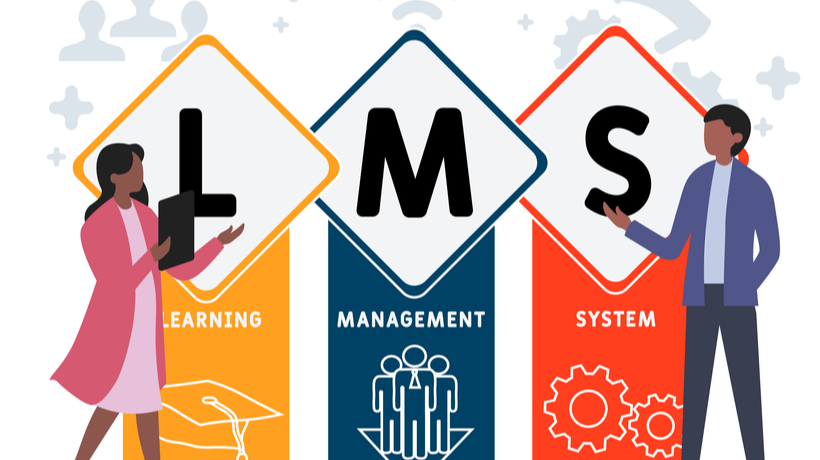
SaaS LMS For The Schooling Business
SaaS LMS for the education industry
As today’s education system becomes more and more digital, eLearning tools are becoming increasingly important for students and teachers alike. The best eLearning platforms allow educators to customize learning plans based on the needs, interests, and strengths of their students. The education industry is growing day by day; Schools are using eLearning platforms that facilitate online teaching and interaction with teachers, and students are using mobile technologies to access their educational content from anywhere.
It should be noted that a software-as-a-service learning management system is an online option for eLearning. An LMS is web-based. This means that it is available on the internet and is always connected to the internet so you can use it anytime, anywhere. When looking for a new LMS, be sure to consider whether or not you will go with SaaS.
What is an LMS?
A Learning Management System (LMS) is cloud-based software that enables the management, tracking, reporting and development of employee training from onboarding to continuing education. An eLearning solution enables companies to create, deliver and track their own training programs, or to hire a professional service bureau to create and manage them. With an LMS, employees can easily access training content from most devices without having to travel off-site for training.
Simplify your company’s LMS and management needs with an all-in-one solution that you can host in the cloud and manage from anywhere. With the cloud software, you can create courses, content and users from anywhere and control their access and distribution without an IT department.
What are the benefits of a SaaS LMS?
SaaS learning management systems do not need to be implemented. You don’t have to spend time or money going through the implementation process and familiarizing yourself with how it works. You can create your own instance and use it immediately after paying the license fee.
Learning management systems are designed to make your life easier so you don’t have to waste time setting up training initiatives. If you’re using a software-as-a-service platform, you don’t need to hire an IT consultancy; You just turn on the program and start using it.
When implemented correctly, a learning management system can improve workplace productivity by allowing employees to attend eLearning courses from anywhere. To make sure learners are ready to use your LMS, be sure to adhere to the following guidelines.
A learning management system can help you be more productive by keeping all of the information about a course in one place.
6 important guidelines to follow
In order for employees and students to be able to use the software as efficiently as possible, there are 6 guidelines that you should follow:
1. it should appeal to the maximum audience
To ensure that members of your association are getting the most from your LMS, you should send an email or intranet message and schedule a training session for them. The key to effective use of the LMS by employees is to get the message out quickly and frequently.
A successful LMS strategy starts with a good communication plan. Giving members a clear understanding of what the LMS can do for them ultimately leads to more fulfilling employee experiences and more effective training. It is also important to keep your communication skills up to date. Quickly let your reps know about the latest news or features and make sure everyone knows how to get help or get in touch with you.
2. Educate everyone and run a training course
When you introduce your LMS to your members, make sure they know that it will help them grow professionally. Deliver your product with a trial run course or training material and provide guidance on how to use the tools effectively.
As an LMS provider, your job is to help companies using your platform get on board and grow professionally. The easiest way to do this is to provide them with training materials and test run courses before customizing their own solution. You can develop these materials yourself or work with a training company to create them. The end result should be a simple demonstration of your tool.
3rd Introduction of gamification
Competition is healthy indeed. It is also true that some companies are slightly better at this than others. You can improve your game by adopting gamification features in your LMS along with other industry leading tools. This is not just about having fun; It’s about realizing that technology is forever changing the business world and your team has to adapt to stay relevant.
Use gamification tools to keep staff engaged with your LMS platform and drive brand-wide collaboration. Downloadable leaderboards, badges, and activity thermometers fit your corporate culture and your company’s broader business goals.
4th Combine online and in person
When it comes to online courses, the value of engaging physical spaces cannot be denied. In fact, 70% of teachers believe that incorporating hands-on learning into their curriculum is more effective than traditional teaching.
Online courses are an effective way to spread training and knowledge, especially when students can watch recorded videos at their own pace. However, many people often feel distracted by these videos. Since most workstations require employees to sit in front of a computer for hours, it is easy to concentrate on other tasks.
5. You need the reader to be intrigued and locked in
- Run workshops to involve professionals at the local level and help them learn new skills.
- In the early stages of event planning, find out what topics are engaging professionals, and then tailor your event around those topics.
- Make it your business to have no less than a social hour with no talk about work! Schedule a time for companions to meet and get to know each other outside of business.
6th Collaborative learning
You can use social learning to encourage your learners to build strong relationships in the workplace, share knowledge, and work together instead of competing. This method encourages learners to invest more in their training by looking at it in order to strengthen personal relationships and build on a common understanding with their peers.
Relationships in the workplace are vital as they help your employees work together authentically, share knowledge, and create a happy work environment. To encourage collaboration among staff, you can implement social learning platforms that make it easier for learners to make data-driven decisions.
LMS software can be used to gather insights that can help companies make better decisions about their products and services. Companies can use the information gathered to understand existing weaknesses in their company or even to discover new opportunities.
last words
It is entirely up to you to decide what to do with the data. However, the LMS software can certainly help you get there. Data is critical to understanding how well eLearning software is performing across your company. Most eLearning platforms allow users to compare demographics, learning styles, and more to give you the data you need to customize your learning programs for maximum impact. It pays to invest some time in understanding where your company compares to other comparable organizations.



